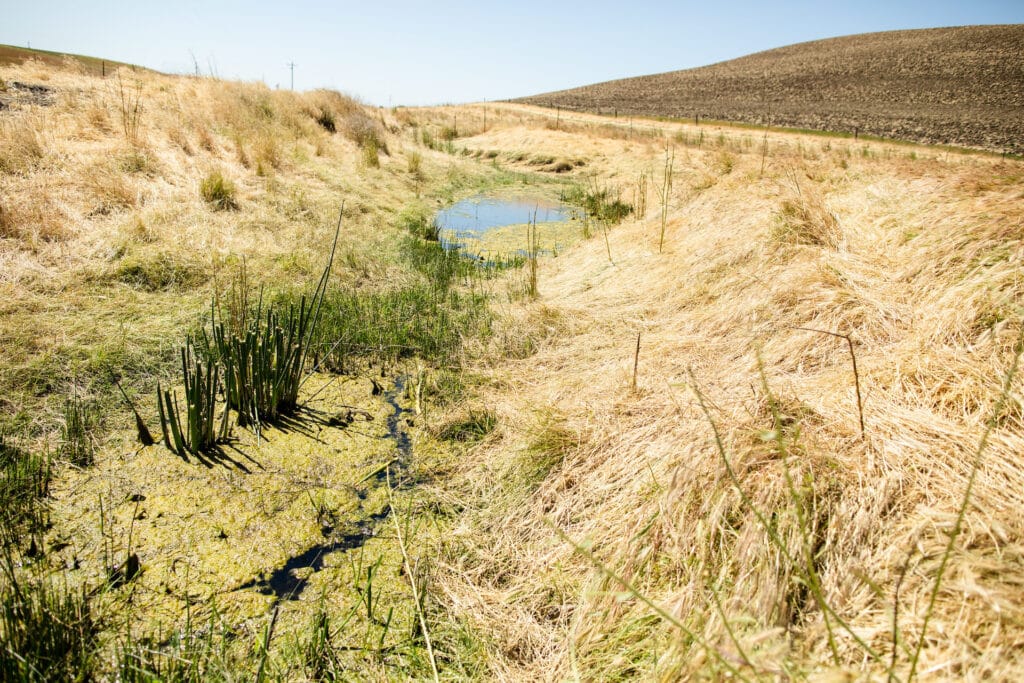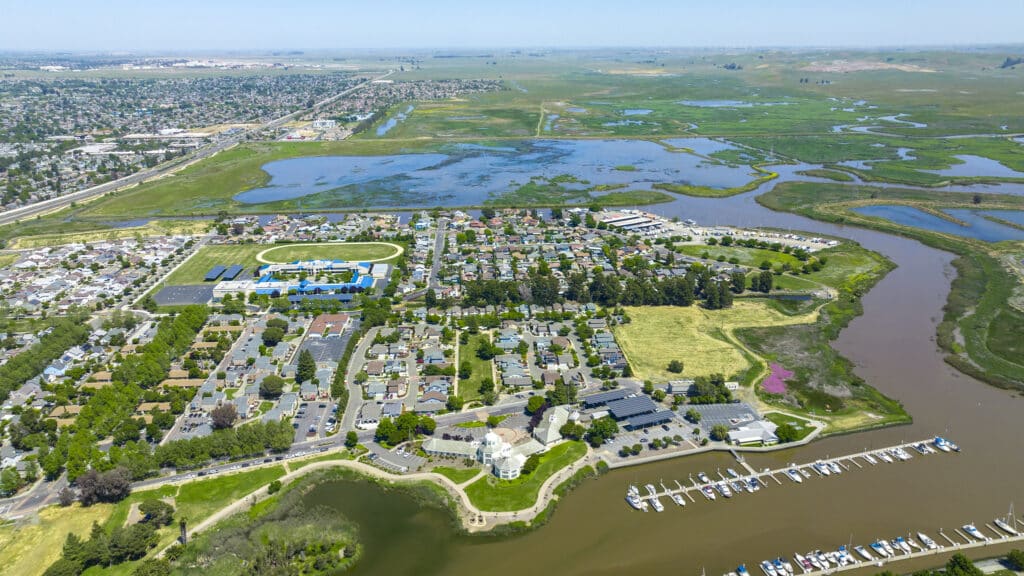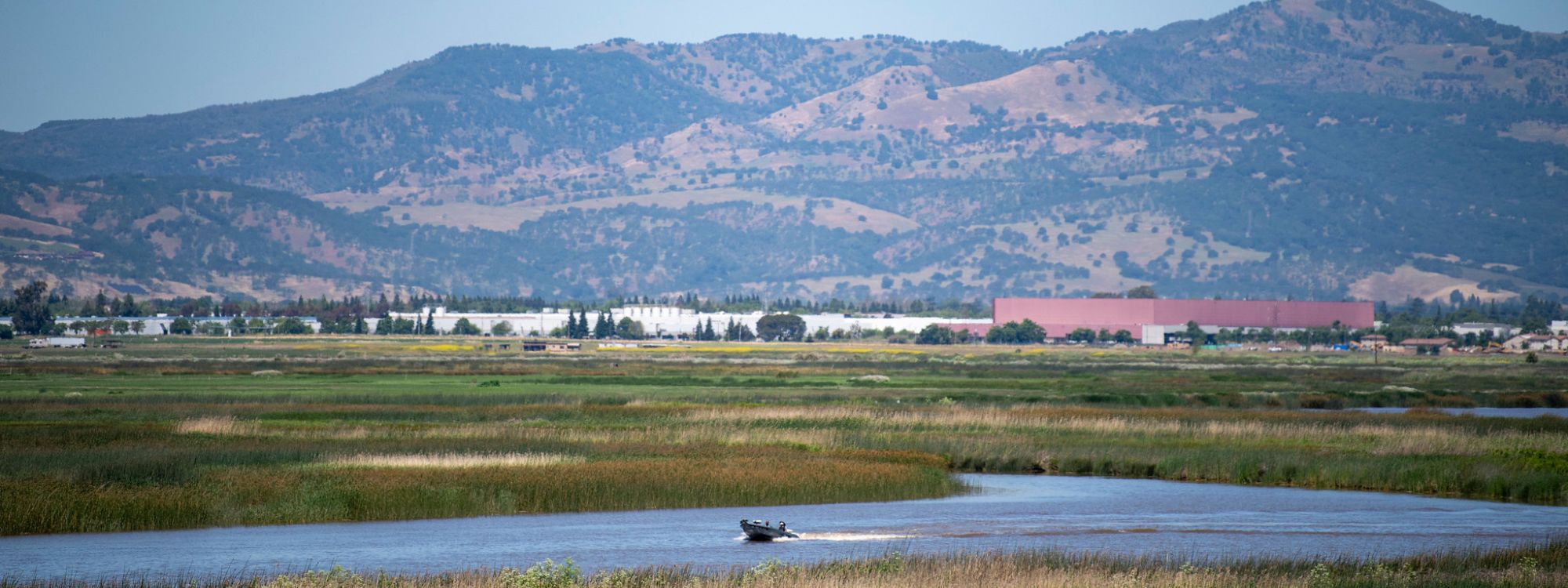Since the news of a huge sprawl development proposal in Solano County became public last August, one of the main questions around the “California Forever” project has been: where are they going to get water from?
This question is top of mind for the local community who is already living in a climate-stressed region. Eastern Solano County is grappling with impacts of extreme heat, prolonged periods of drought, and greater variability in rainfall year-to-year. Yet, even in the face of climate change, ranchers and land managers in the Montezuma Hills, many of whom have generational knowledge of the land, continue to adapt and innovate with dryland farming and regenerative agriculture practices. These experienced farmers and ranchers have voiced growing concern around where California Forever will source its water.

Concerns around water remain unaddressed after the group of Silicon Valley billionaires called Flannery Associates faced another setback by local authorities. Earlier this November, the Solano County Water Agency (SCWA) decided to pause conversations with the group during a packed Board meeting. Flannery offered to fund a study on water resources in the county and the potential use of the North Bay Aqueduct for their proposed new city, according to ABC10 News, but many SCWA board members expressed concern about working with them before any actual plans for development have been released.
“That’s not how we operate, we are not protecting the public if we are going to make decisions on a project we have no idea what it looks like,” said one board member to ABC10 after the meeting. Flannery is expected to unveil concrete plans for their proposed city in January 2024.
Added Strains on Water Resources
Flannery Associates acquired over 54,000 acres of land for over $800M in the region—an area the size of the City of Oakland—in the past 5 years. They are now the largest landowners in the county.
Most of the area proposed for development is zoned for agricultural use and is known for its vibrant ranching industry, iconic grasslands, sustainable wind power, and unique vernal pool and delta habitats. Born out of a countywide effort to protect Solano’s open spaces and agricultural industry, voters passed the first Orderly Growth Initiative in 1984, which focuses growth within existing cities and requires a vote of the people to develop agricultural land. Since then, orderly growth principles are now firmly embedded in the County’s General Plan (2007) and remain a core value of Solano residents.
“I’m concerned they’re going to try to undo 40 years of citizen-driven initiatives to protect our open space and agricultural land in Solano County,” said Aiden Mayhood, a 7th generation resident of Rio Vista, to Greenbelt Alliance during a community meeting.
Local residents are particularly concerned with the impact of California Forever on its landscapes and livelihoods. Water is a particularly scarce resource in rural Solano County, an already climate-stressed area that is susceptible to prolonged drought and extreme heat.
Currently, most of the region’s water comes from either groundwater, Lake Berryessa, or the North Bay Aqueduct, according to an ABC10 report. On their website, California Forever mentions its interest in contributing to “necessary upgrades to water supplies drawn from the North Bay Aqueduct just north of the project area” but, for now, that pathway has been interrupted by Solano’s Water Agency until they present more concrete plans. Pulling more water from the Sacramento would have considerable impacts on the region, including but not limited to salt water reaching further up the river through compounding impacts of overdrafting and sea level rise.
Flannery Associates claims that they have sufficient water rights without joining the North Bay Aqueduct expansion and would be looking to buy additional rights, but their proposed alternatives also present challenges. Records indicate that they hold water rights for 5,330 acre feet of water per year, which could potentially support roughly 60,000 residents. But first, Flannery would have to petition the water board for a change of use from irrigation to urban uses.
The investors group’s proposed development presents significant additional challenges to groundwater supplies. Eastern Solano County is a key source for groundwater replenishment that would be severely impacted by urban development with additions of impermeable surfaces and infrastructure that would reduce groundwater recharge capabilities. Groundwater in Solano County is at stable levels now, but the County overdrafted this aquifer in the 1950s. California Forever runs the risk of repeating these past mistakes if they rely too heavily on this water source, whereas the farmers and neighboring communities currently use groundwater in a sustainable way. Beyond that, they also claim to have water rights from the Sacramento river.
Protecting Agricultural Lands

Open spaces and working lands are crucial to providing ecosystem services such as filtering water, retaining rainwater, and recharging aquifers that supply water to Solano County, namely the Subbasin of the Sacramento Valley Groundwater Basin.
“It’s no secret that Suisun City is adjacent to the largest brackish marsh in the country. A lot of land that was purchased is actually protected wetlands along our delta way, so [I’m] very concerned about the detriment to wildlife, native plant life, and water usage,” said Mayor Pro-Tem of Suisun City, Princess Washington.
Current farming practices in the region are already adapted to a drier climate, adopting a three-year cycle of dry farming, grazing, and letting the land fallow. All in all, dry farming is a soil tillage technique that maximizes water efficiency. “They [Flannery Associates] don’t see the value in our dry land farming and grazing lands in the area. I just hope that they don’t attempt to change the agricultural integrity of our county” explained Mayhood, who has been part of the farming community in Rio Vista for seven generations.
Rezoning and developing these lands to more intensive uses than what is currently zoned for would have a substantial impact on water availability in the county.
Additionally, the impacts of increased extreme climate events including wildfires, heat waves, and prolonged drought will impose more challenges to the region and communities who live there.
Channeling Growth To Cities

California Forever faces additional political challenges. In a recent land tour, CEO Jan Sramek claimed “We would build our own water treatment plant, sewer treatment plant, all the infrastructure we would build ourselves.”
However, that claim didn’t seem to find local support. In October, the Council of Rio Vista voted against allowing their legal representatives—law firm of Kronick, Moskovitz, Tiedemann & Girard—to also represent Flannery Associates in navigating the acquisition of more water rights, claiming a conflict of interest.
The investment to build the necessary infrastructure from scratch in undeveloped lands significantly increases the cost of this sprawl development. One of the main arguments from Flannery Associates to build on agricultural lands is that infill development is more expensive and bureaucratic. But the cheaper price of agricultural lands may be offset by the high investment costs of basic infrastructure like water and electricity—burdening taxpayers.
That strategy is consistent in creating more sustainable use of water resources. According to a 2015 report from Energy Innovation and Calthorpe Associates, the annual per capita water use doubled from 25,000 gallons in “urban” development to 44,000 gallons in “standard” (sprawl) development.
Many local residents would like to see this kind of infrastructure investment in their current developed cities.
“What Flannery is trying to do just flies absolutely in the face of what we have accomplished over 40 years, which is direct development into our seven cities, protecting our farmlands and open spaces,” commented Duane Kromm, from the Orderly Growth Committee, to Greenbelt Alliance.
Ultimately, the most important political obstacle for Flannery Associates and California Forever will be convincing voters to change current zoning restrictions through a countywide ballot initiative in November 2024, and to elect for costly new infrastructure to divert resources away from existing cities to support Flannery’s proposal for a new sprawling, resource-intensive development in place of valuable watersheds and sustainable working lands.
If you want to learn more about our advocacy efforts to protect Solano County from sprawl and join our movement, check our page for more information.
Director of Planning and Research, Sadie Wilson, and Resilience Associate Nate Hutington collaborated on this blog.
Edited by: Justin Ebrahemi




